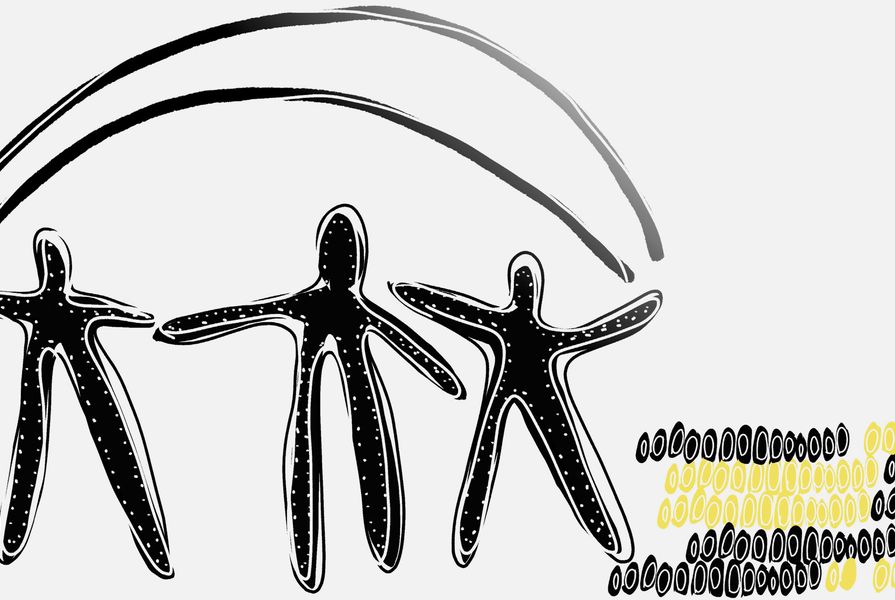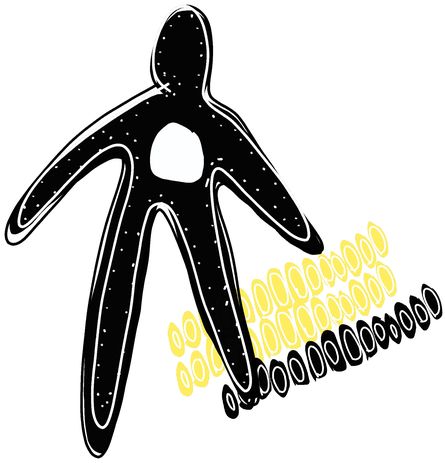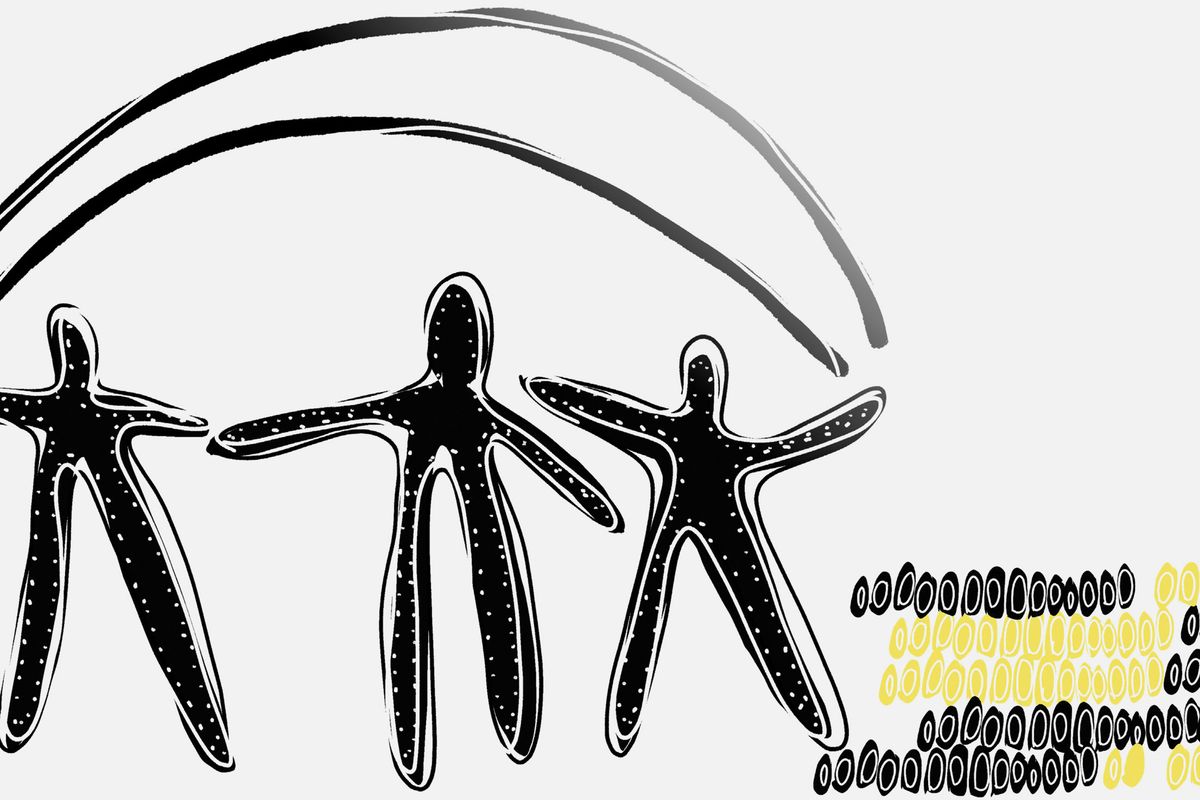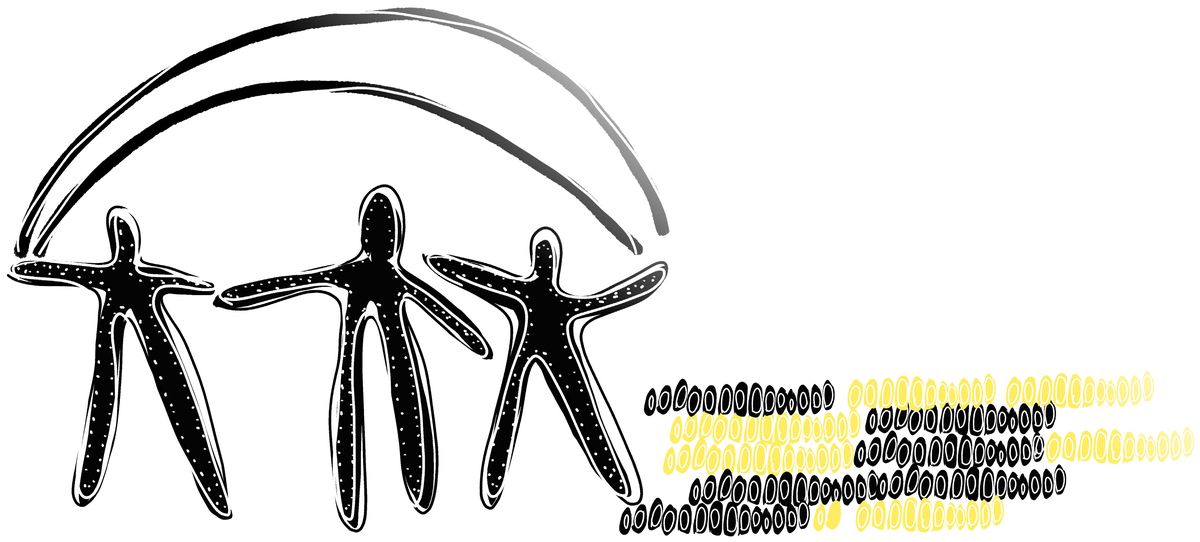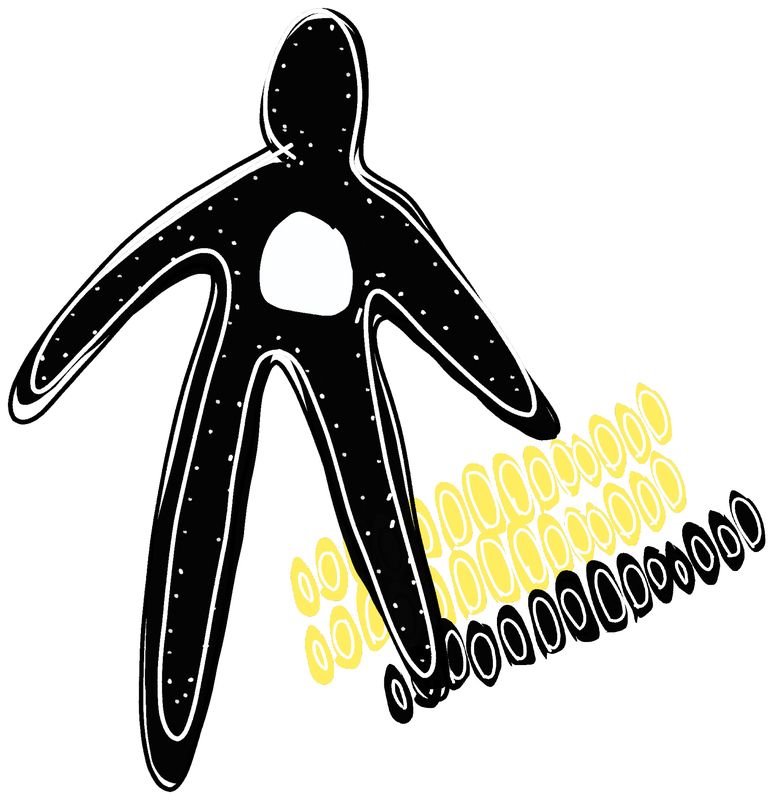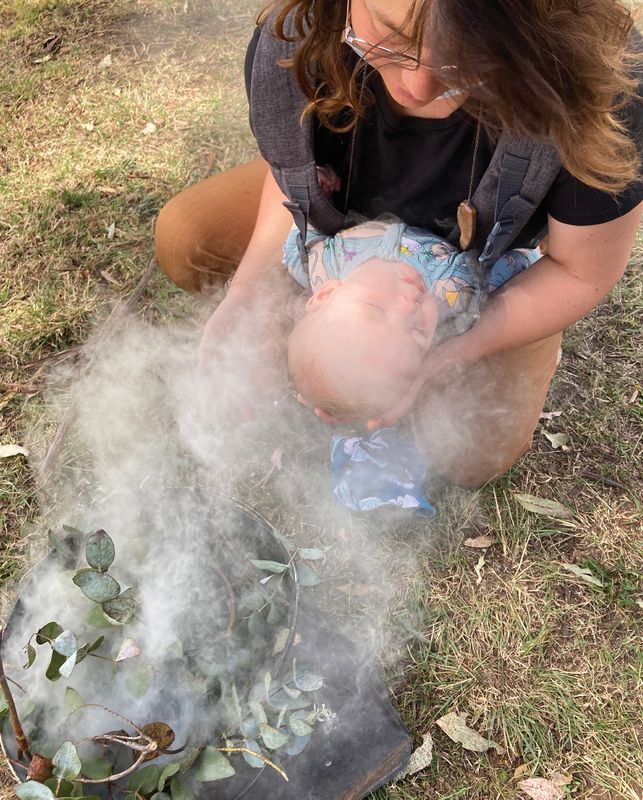My name is Kaylie Salvatori. I am a Yuin Budawang woman and Director of COLA Studio, living and working in Gundungurra – Dharug Country. Though my thoughts and experiences are likely shared by many Indigenous people, unless otherwise stated, the thoughts presented here are my own perspectives as an Indigenous woman living in contemporary Australia and are not intended to speak for Indigenous people as a whole. I am thankful to my Ancestors, Elders and mentors for guiding me through my journey and hope to do my part in giving back to community and Country.
I think we may be a part of a long, long lesson: civilization. The exercise of human dominion over nature – and each other – has time and time again exceeded Country’s capacity to sustain itself.1 Now, at the precipice of catastrophic change, we feel the consequences of global attempts to deny our obligation, as part of nature, to ensure the continuity of life.
Before existence became “work,” before we became trapped in the static Roman calendar, we looked to cues in the environment to mark the flow of time. But we know the calendar isn’t quite right, and we know the hours don’t quite work – we have to add a day every four years and we adjust our clocks to our bodies twice a year.
Time is the flow of change in space, experienced differently and understood in myriad ways by different cultural knowledge systems. In some Indigenous knowledges, there is no word that neatly translates to the Western concept of time. Instead, space and time are understood as one, or interchangeable.2 The flow of time is marked by cues from Country: the land and all that is within it, the seas, the skies.
I won’t try and explain Indigenous concepts of time. I couldn’t eloquently do so and more importantly, I do not have the right. Colonization has imposed a linear experience of time on me (and many other Indigenous peoples), which means I do not have the cultural authority to talk on Indigenous time-space concepts as told through Lore. For now, let’s agree that it is different, connected to space and also cyclical – for many Indigenous cultures, time-space is more deeply aligned to the laws of thermodynamics than Western linear understandings.3
Unsurprisingly, given that we’ve been here forever – Western science has this at 65,000 years and counting – for many Indigenous knowledge systems, the greatest authority is that of continuity. It does not make sense for us to destroy things that have always been – it is our obligation as humans, as a part of this web of interconnectedness, to play our role in ensuring that everything can continue to be.4 A culture built around continuity, based on environmental cues is, almost paradoxically, one that is also based on dynamism, responsiveness and change. Where time is marked by changes in space, rather than by ticks of a clock and dates on a page, the constant is change and an understanding and willingness to respond to restore balance. This means that life continues for our children, our kin, and their children – forever, as it always has been.5
Through the compartmentalization of time, Western civilization and all of us colonized Indigenous kin are trapped in short cycles of entropy – yet seeking unlimited growth that privileges the present over the forever. How are we to fulfil our obligation as humans to ensure that life continues if our experience of the flow of time is decoupled from the tangible expressions we witness in space, the environment around us? How are we to sustain everything if time and change is based on the ticking clock or, perhaps worse, the virtual world?
Intergenerational healing – making space for our children and theirs. (Image from Djinjama-facilitated smoking ceremony).
Image: Djinjama
Responding to change, thinking beyond the present
The deep time embedded in Indigenous oral knowledges has been carried for aeons. Stories about change in the landscape – and how we changed with it – are some of the oldest stories we have. Stories colonizers initially dismissed as myth speak of flooded shorelines and valleys, of rising sea levels and changing climates and celestial phenomena that took thousands of years of observational data-gathering to formulate into lore. Stories from the last ice age – which speak to coastlines far beyond present shores, to mass migration and adaptation – have been part of oral traditions for 15 to 20 thousand years.7 All of these stories are underpinned by, and work to inform, Indigenous understandings and teachings of time-space, and how we are to respond to the flow of changes in it.8
Accepting Indigenous understandings of time-space as being interconnected and cyclical, there are several Indigenous tenets of living that I think are poignant to us designers: (a) ensuring continuity of life; (b) being attuned to changes around us; (c) learning the lessons carried from deep time to understand (b) and ensure (a). There are a lot of crossovers and interconnections between them. I have given this responsive approach the title of “Looking to the skies and thinking like an Ancestor” – an approach that reminds us that time is, above all, guided by our celestial movement through space around our sun and its own movement through the universe.9 These patterns in the skies give us cues to be read, which the waters, plants, air, wind, earth and animals also read; they kindly send cues back to us as well. If we (re)learn these cues, which our Ancestors have so thoughtfully observed and codified for aeons in order to ensure life continues for all, then perhaps we can do the same for our descendants to come.
Finding ourselves by Kaylie Salvatori.
Image: Kaylie Salvatori
Since COLA’s inception, we have been honoured to collaborate with community on most of our projects. With each session, notions of intergenerational equity and continuation of culture and connection with our Ancestors and descendants feature heavily as design aspirations. In two very different projects, an Indigenous-owned campground on the South Coast of NSW and a large greenfield development in Western Sydney, community has been involved in workshopping strategies and designs to ensure their voices are heard and they are able to exercise custodianship over Country. In both of these projects, making space for the generations to come – and those of our non-human kin – are the biggest concerns and drivers of the design frameworks.
Though very much a work in progress (as all things are), these collaborative sessions with community, my cultural mentors10, ways of being and the continued cultural journey inform a suite of principles that guide our methodology for design and strategy work. I think our approach can be useful to the broader design profession as well:
- Start with Country, with understandings of deep time and the lessons carried in her changes, her stories
- Privilege local Cultural Knowledge Holders, their knowledge and voices throughout the design process
- Design according to the cues around us, to allow for synchronicity and adapting to changes that may happen over the flow
of time
- Respond to changes in space and time through the process of design – understand that “a bucket of money is supposed to be spent before [calendar date]” is not necessarily aligned with the right time according to Country (or community)
- Design for continuity – things that have always been, should continue to be. In designing for continuity, we ensure that we are designing for intergenerational equity
There are many Indigenous peoples continuing to do the work in carrying and teaching these vast and complex knowledge systems who deserve the credit and respect owed to them for doing so, in spite of a system that regularly denies their humanity. Indigenous peoples the world over are imploring the occupiers to listen to the land, to hear their knowledge and to act appropriately. It is through their work that cultural babies like myself are able to reconnect and employ the above methods and ethos into a Western design framework that until very recently has been underpinned by the colonial spatial expression of dominion over nature, lands and peoples.
The fact of the matter is that the consequences of this long, long lesson – whether you think in linear time or otherwise – are being taught to everyone, with the harshest consequences dished out to those with the least culpability. It’s everyone’s job to listen and learn from Indigenous knowledges, and the time
was yesterday.
For now, I leave you with a poignant proverb that particularly resonated with me while thinking about this subject: “When you look behind you, you see the future in your footprints.”11
1. Tyson Yunkaporta, Sand Talk: How Indigenous Thinking Can Save the World, Text Publishing, Melbourne, 2019
2. Karl-Erik Sveiby and Tex Skuthorpe, Treading Lightly: The hidden wisdom of the world’s oldest people, Allen and Unwin, 2006, pp 6–10
3. There are several sources one can look to for an introduction to the interconnectedness, permanence and cyclical understandings of the flow of time encapsulated within Aboriginal lore: Karl-Erik Sveiby and Tex Skuthorpe, Treading Lightly: The hidden wisdom of the world’s oldest people, Allen and Unwin, 2006, especially chapters 9 and 10; Tyson Yunkaporta, Sand Talk: How Indigenous Thinking Can Save the World, Text Publishing, Melbourne, 2019; Margo Neale and Lynne Kelly, Songlines: The Power and Promise, Thames and Hudson, Australia, 2020; Gay’wu Group of Women, Songspirals: Sharing women’s wisdom of Country through songlines, Allen and Unwin, 2019; Karlie Noon and Krystal de Napoli, Astronomy: Sky Country, Thames and Hudson,
Australia, 2022.
4. Karl-Erik Sveiby and Tex Skuthorpe, Treading Lightly: The hidden wisdom of the world’s oldest people, Allen and Unwin, 2006, pp 6–10, 215, especially chapters 9 and 10.
5. Karl-Erik Sveiby and Tex Skuthorpe, Treading Lightly: The hidden wisdom of the world’s oldest people, Allen and Unwin, 2006; Tyson Yunkaporta, Sand Talk: How Indigenous Thinking Can Save the World, Text Publishing, Melbourne, 2019; Margo Neale and Lynne Kelly, Songlines: The Power and Promise, Thames and Hudson,
Australia, 2020
6. Tyson Yunkaporta, Sand Talk: How Indigenous Thinking Can Save the World, Text Publishing, Melbourne, 2019, pp 56–60
7. Margo Neale and Lynne Kelly, Songlines: The Power and Promise, Thames and Hudson, Australia, 2020, pp 102, 108–116
8. Tyson Yunkaporta, Sand Talk: How Indigenous Thinking Can Save the World, Text Publishing, Melbourne, 2019, pp 44–49
9. Karlie Noon and Krystal de Napoli, Astronomy: Sky Country, Thames and Hudson, Australia, 2022
10. Much of my approach and methodology has been greatly informed by working and collaborating with mentors Daniele Hromek (Yuin) and Clarence Slockee (Bundjalung), who also work in this interstitial space of Indigenous cultural expression and the built environment.
11. Margo Neale and Lynne Kelly, Songlines: The Power and Promise, Thames and Hudson, Australia, 2020, p 102
Source
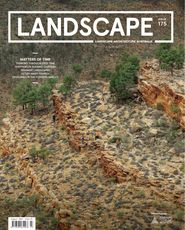
Practice
Published online: 5 Aug 2022
Words:
Kaylie Salvatori
Images:
Djinjama,
Kaylie Salvatori
Issue
Landscape Architecture Australia, August 2022

